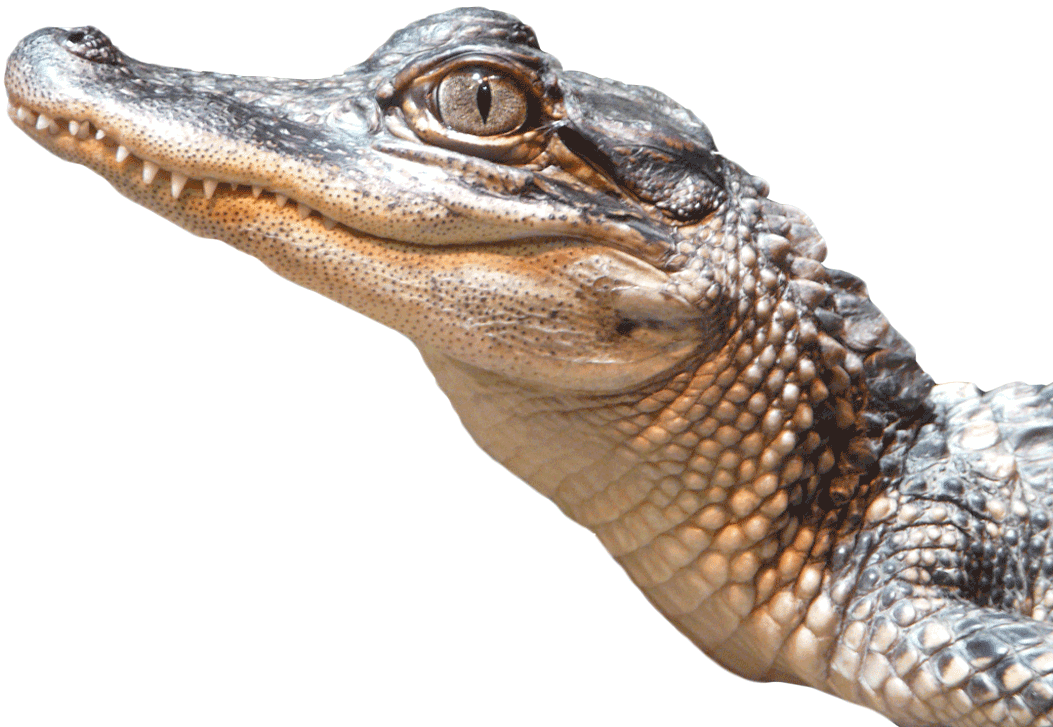Alligator
Hello! I’m an Alligator
These gentle reptiles are timid and rarely predate on humans. Often confused with crocodiles, they belong to a distinctly different family. Alligators have U-shaped heads whereas crocodiles have V-shaped heads. Only the upper teeth are visible when an alligators mouth is closed whereas crocodiles reveal both upper and lower teeth. Large adult alligators can hold their breath up to 45 minutes. The amount of time they can remain submerged depends on their size and the water temperature.
Not as aggressive as crocodiles, their jaw muscles are relatively weaker in comparison. This being said, the alligator’s closing jaw strength is still around 2,980 psi. To put that in context, a human eating a steak would exert between 150 and 200 psi. The saltwater crocodile is the clear winner with a rating of 3,700 psi.
A mature alligator has 80 conical shaped teeth. They have no molars for crushing and grinding food therefore they swallow their food whole. Lost teeth are replaced. An alligator may go through 2,000 to 3,000 teeth in its lifetime.
The sex of baby alligators (hatchlings) is determined by incubation temperatures during the first 10 days of embryo development. Warmer internal nest temperatures (above 32°C) usually produce all males, while cooler temperatures (below 30°C) produce both sexes or all females. Young alligators feed on insects, snails, frogs, small fish, crayfish, crabs and freshwater shrimp.
The National Zoo and Aquarium is home to 3 alligators.

Alligator Facts
| Conservation | Least Concern |
|---|---|
| Distribution | South Eastern United States & the Gulf of Mexico |
| Weight | Up to 360kg |
| Length | Up to 4m |
| Life Span | 50–70 years |
| Egg Incubation | 65 days |